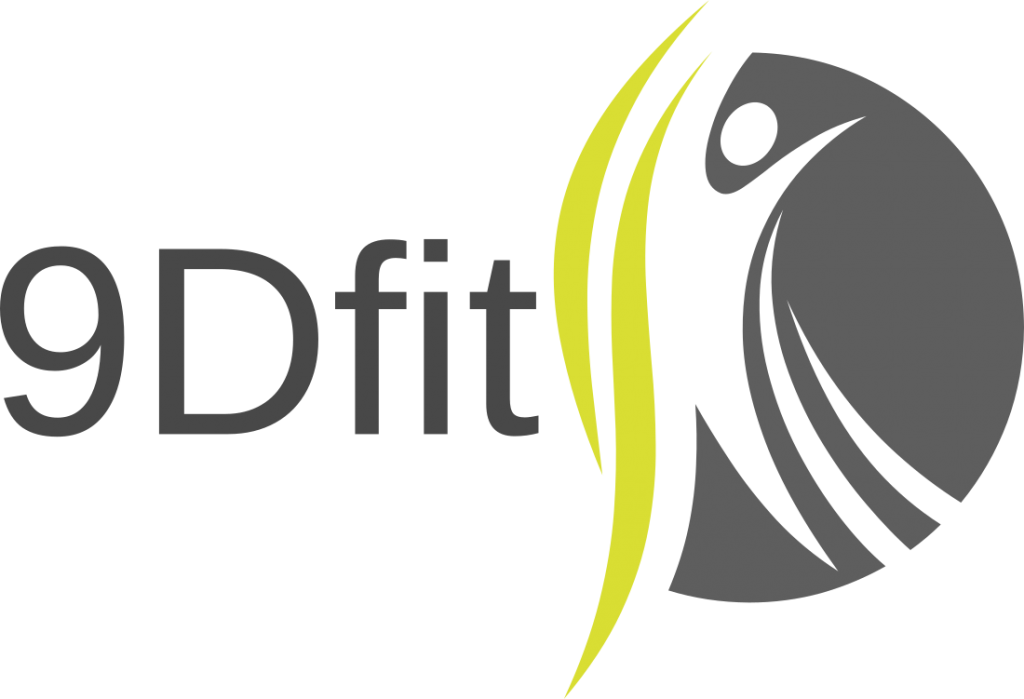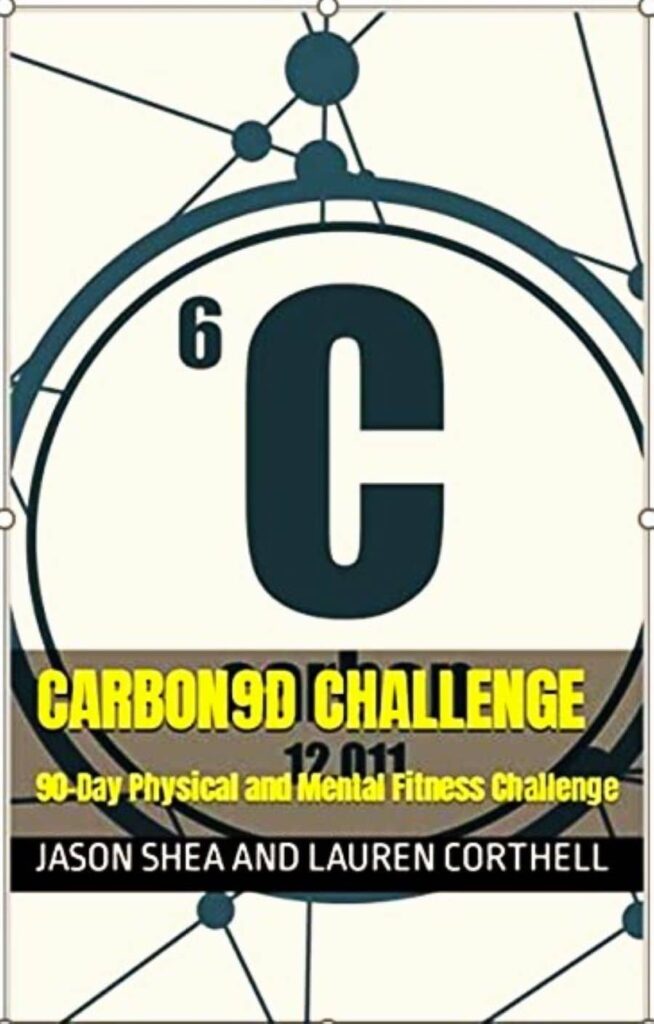Jason Shea M.S., CSCS, TSAC, Law Enforcement Health and Wellness Coordinator
Lauren Corthell, NSCA-CPT, Wellness Manager, Hampden County Sheriff’s Department
Do you like playing chess?
Have you ever considered that managing stress can be like playing game of chess? On one side of the board is you. On the other side it is life. How we play the game and respond to life’s moves is our stress resilience.

For example, you may be running a few minutes late for morning roll call. This is like life moving a pawn up one spot. Not a major move in the grand scheme of the game. An adequate response might be to move one of your pawns up one spot.
A major stress may be in the form of a family member, co-worker, or close friend becoming very ill. On the chess board, life might move the queen into check. Your response requires energy and attention. On the board you need to respond with a move to block or prevent checkmate.
Problems arise when we must respond to unforeseen stressors throughout the day. Late calls, sleepless nights, disagreements with your spouse, unexpected medical bills, overbooked schedules, traffic on the way to work, negative media publicity, and more, can all take their toll on an officer.
On the chess board, this is akin to life moving several pieces at one time. We become overburdened and our stress response to simple stressors becomes dysregulated. When left unchecked, the continued presence of these personal and occupational stressors can create a situation in which our “adaptive capabilities become overextended (72).”
Stressful Situation
Policing has long been considered one of the most stressful occupations. According to 2021 Business News Daily report, it was fourth, just behind Airline Pilot, Firefighter, and Enlisted Military Personnel (27).
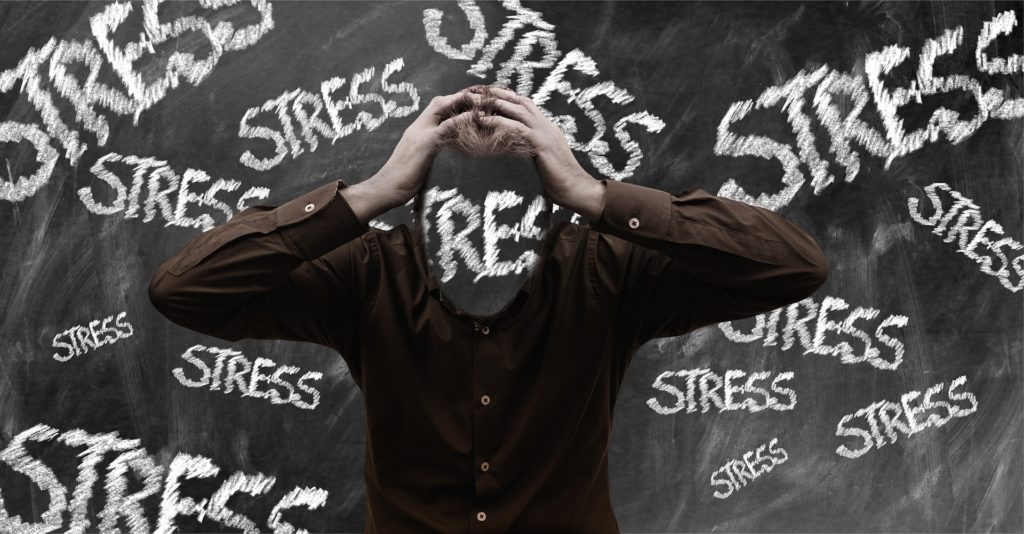
Research as far back as 2011 has found that “that levels of high stress range from 33% to 46% among police officers and the proportion of officers with measurable mental illness has doubled over the past ten years (23).”
An officer’s average resting heart rate increased from 59 to 82 beats per minute per shift (4). That is a 23 beat per minute increase while on duty. The cumulative stress on the heart to work harder increases the officer’s risk of developing high blood pressure and cardiovascular issues.
In 2013, a study out of the State University of New York, Buffalo found the average officer lifespan is fifty-five years of age. Looking at a sample cohort of 2,800 officers, the study found that three of the main risk factors were stress, shift work, and obesity.
The research team summed it up brilliantly when they stated that “stress is believed to produce a neuroendocrine response which, through nervous and endocrine systems, affects all body organs (69).”
Stress, when left unchecked, can wreak havoc on the body and brain. Chronically high levels can lead to increased rates of high blood pressure, headaches, low back pain, and alcohol abuse (6). Chronic stress can also increase the odds of developing elevated blood fats, abdominal obesity, and blood sugar issues (23).
High levels of the stress hormone cortisol have been linked to decreased executive functioning, slower processing speed, and an increased risk of developing Dementia and Alzheimer’s Disease (50).
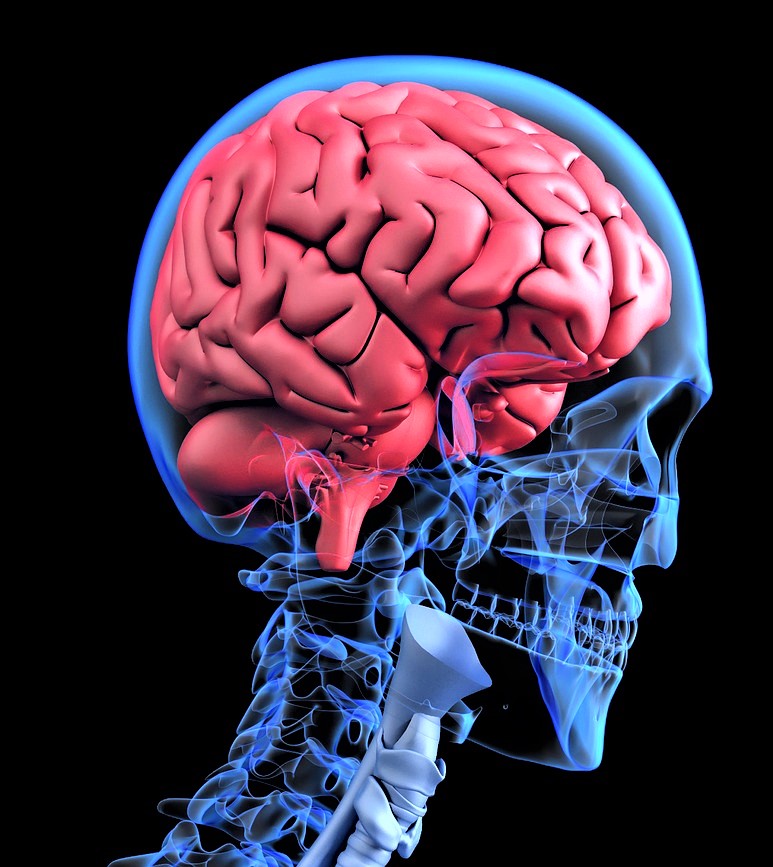
The second major factor discussed in the officer life expectancy study was shift work. A sleepless night can elevate cortisol levels and negatively impact the critical decision-making area of the brain (30). A 2013 study found that a week of sleep deprivation can further the damage, modifying the actions of over 700 genes (43).
Studies have also shown that sleep deprivation can impair judgement and decision making, while increasing officer susceptibility to bouts of anger during critical situations (57, 70).
Obesity, the third major risk factor discussed in the study, has been linked to a wide spectrum of health concerns. These include heart disease, chronic inflammation, diabetes, metabolic syndrome, and shortened lifespans.
Research has shown that elevated cortisol levels can lead to increased levels of fat about the abdomen (45). In turn, the greater the central fat distribution, the greater the psychological vulnerability to stress (13). A study from Psychosomatic Medicine found that subjects with higher waist to hip ratios secreted significantly more cortisol during stressful situations than subjects with low waist to hip ratios (13).
Obesity can also impact brain function. A recent study found blood flow to the brain was decreased with progressively higher levels of obesity (3). Chronically elevated levels of A1C/blood sugar have been linked to a 40-50% increased risk of cognitive decline (16).
burnout
The compounding effects, both mentally and physically, of unmitigated chronic stress can lead to officer burnout. A 2017 study found that “burnout occurs more frequently among professionals who work with other persons, especially as service providers where, over the years, they must respond to the client’s demands in a society increasingly based on service exchanges, which elicits job stress” (38).
On a personal level, burnout can lead to conflicts at work or home (7), maladaptive coping behaviors (21), and emotional exhaustion (37).
Operationally, burnout can lead to impaired critical decision making under duress (39), excessive use of force (39), administrative mistakes and decreased work performance (28), and counterproductive work behaviors (59). Officers may also develop a disengaged or cynical attitude toward work (37).
What is Resilience?
Recently, a group of researchers set out to determine if there are physical and mental factors that could predict resilience. They studied BUDS candidates on Coronado Beach.
The researchers found that “resilience is a combination of competence, confidence, connection, character, contribution, coping and control, or an individual’s ability to maintain a “positive adaptation in the face of adversity (35).”
Two physiological characteristics that correlated with successful BUDS completion rates were higher levels of something called BDNF and DHEA-to-cortisol ratios (35). BDNF is like fertilizer for the brain. Among its many benefits, it can help improve memory, mood, and stress resilience. DHEA is a precursor to testosterone, while its ratio to cortisol gives insight into anabolic vs catabolic states.
While you’re probably not going to take the plunge and enlist in the special forces pipeline, what else can you do to improve resilience to stress?
“The Aggregation of Marginal Gains”

What do you know about British Cycling?
Unless you are a big fan of international cycling, the answer is most likely not too much.
Here’s a quick back story about the British Cycling Program introduced in James Clear’s book Atomic Habits.
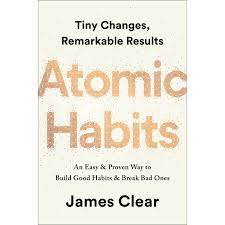
From 1896 to 2004, the British Cycling team won a total of ten Olympic gold medals, with five coming in 1908. A sixth-place finish in the 1962 Tour de France was their best result. The team was so bad, the British bike manufacturer who sponsored them did not want to renew its contract. In 2003, they decided they needed to make a change. They hired new Performance Coach Dave Brailsford.
Looking for areas they could make improvements, Brailsford took a deep look into every aspect of cyclist performance. The cyclists traded their outdoor cycling suits for lighter and more aerodynamic indoor suits. They experimented with different massage gels to improve muscle recovery. They even put rubbing alcohol on the tires for better road traction.
But the performance coach and his team didn’t stop there. Rider sleep habits were evaluated. They tested and determined the best mattresses and sleep positions for each. A surgeon was hired to teach the cyclists how to properly wash their hands. It got to the point where the insides of the bike transport vans were painted completely white. Why? So, they could find any specks of dirt or dust that could get into the mechanical parts of the bike.
Brailsford’s goal was to create what he called “the aggregation of marginal gains”. Where could the team make minor, 1% improvements that would add up over time.
The result of these “marginal gains”? The British Cycling team has become an international powerhouse. From 2012 to 2018 they won six Tour de Frances with three different riders. They have dominated both Olympic and International competition. Of the fifty medals they have won since 2008, 28 of them have been gold.

What does this have to do with policing? This is an example of how the smallest improvements in areas of your life can have the greatest impact on your mental and physical health? Over a period of a year, 1% improvements can add up to gains of nearly 37%.
What marginal, 1% improvements can you make for yourself or your department starting today? What areas, both personally and professionally, can you make 1% daily improvements moving forward?
Here are six 1% tips to improve stress resilience.
1. Improve Your Posture
Did you know that if your standing posture is off, you may be using more energy to fight gravity while at rest? This may rob your brain of the valuable energy it requires during critical decision making and stressful situations.
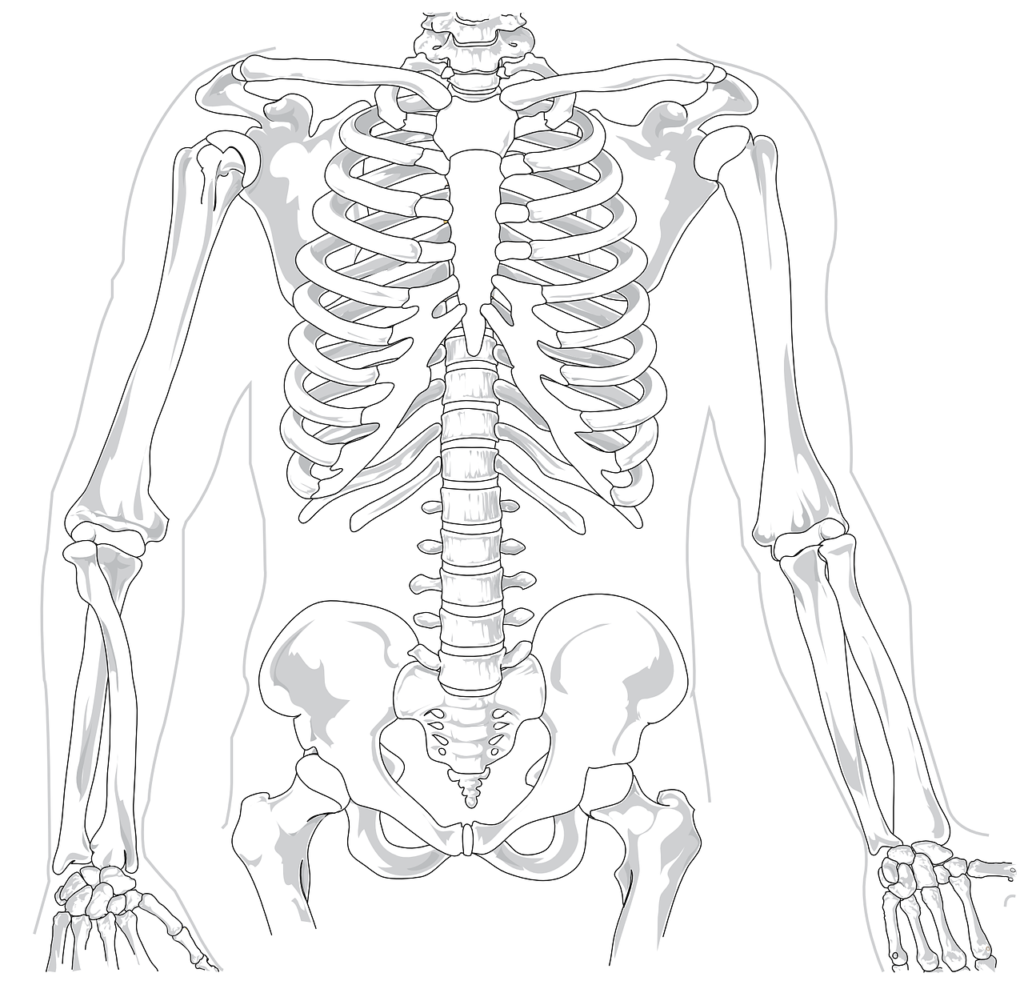
For example, if your foot collapses in, your weight may shift, your hip may elevate, your torso may rotate, your shoulders may round, and your head and eye mechanics may become altered. With altered posture comes breathing (22) and hormonal changes (52).
A 2018 study found that a forward head posture and rounded shoulders led to an inability to completely expand the diaphragm – reduced diaphragm mobility and strength – impacted ability to take breath fully (22). Recent research has also shown that this posture forward head posture has also been linked to altered autonomic nervous system function and sensorimotor control (44).
According to a study from Neuroregulation, “chronic stress, such as repeated threat perceptions are associated with poor posture (52).” The research team discovered that “an upright body posture is associated with increased testosterone, decreased cortisol, greater confidence, mood, and strength when compared to a sustained slouched posture, which is associated with greater chronic neck, shoulder, and back pain as well as lower confidence and energy, depressive memory bias, and failure-related emotions (52).”
We have hosted PosturePro founder and Ted Talk presenter Annette Verpillot. She has worked with our law enforcement community teaching postural recalibration methods. Through these methods we have seen near-instantaneous changes in standing posture, grip strength, eye tracking, blood pressure, and range of motion. For more on PosturePro check out Annette’s site here. For other methods of improving posture including Egoscue, ELDOA, and more check out this article Workouts For Working People: Best Tips to Improve Posture.
2. Monitoring HRV
Heart Rate Variability is the measure of the time variation in between heartbeats. This is controlled by the fight or flight sympathetic parasympathetic nervous systems. The lower the variation, the more dominant your fight or flight nervous system and vice versa.
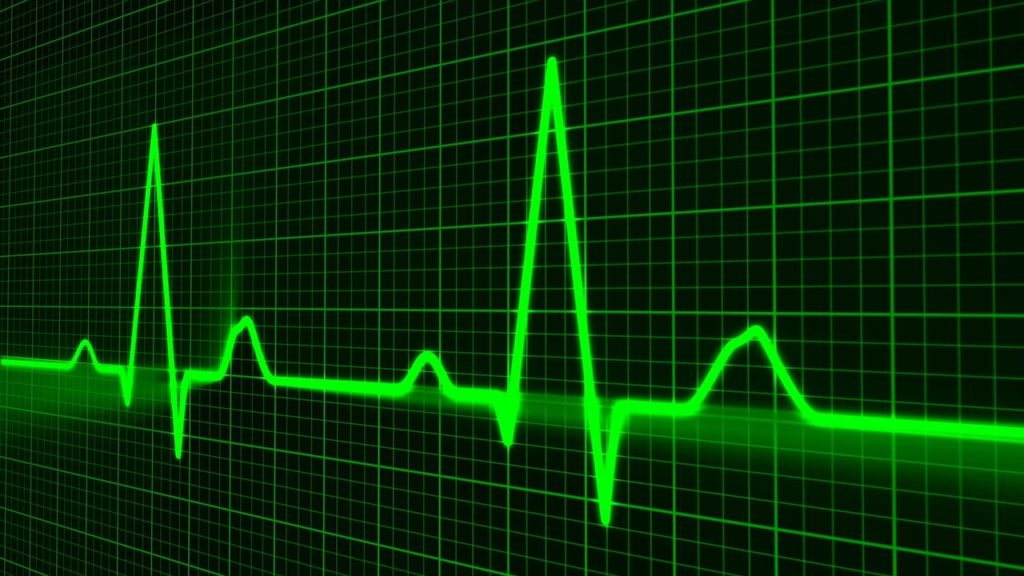
A 2018 meta-analysis of 37 studies on the relationship between stress and HRV found that “HRV indicates the heart’s ability to respond to multiple physiological and environmental events (29)” including mental stress, physical exercise, metabolic changes, and sleep.
Your diet may impact your HRV as well! Check out this self-study on how what you eat the day before may impact HRV, sleep, and next day physical readiness; (How Does Food Affect Next Day Physical Readiness? 9+ Useful Tips For 2022).
Wearable technologies that track HRV include Oura Ring, Apple Watch, Fitbit, Whoop, and Garmin. Factors that can positively influence HRV include deep restorative sleep, nutrition, breath work, and proper recovery and training habits.
3. Sleep
Sleep has been linked to brain health, gene function, mood, critical decision making, and work performance. It has also been linked to immune health (9), blood pressure (46), insulin sensitivity (66), testosterone levels (52), growth hormone (46), thyroid hormone (46), and weight gain (66).
Police Officers are nearly “four times more likely to sleep less than six hours in a 24-hour period than the general population (23).” In order to maximize their sleep, the following interventions may help:
- Try not to eat within 3-4 hours of going to bed. According to Alzheimer’s expert Dr. Dale Bredesen, the energy that is needed by the brain’s glymphatic system, is instead used by the digestive system to digest food.
- Tart Cherry Juice has been shown to improve sleep. According to a 2021 study, “tart cherries contain approximately 13 ng of melatonin per kg of cherry, which upon consumption can increase exogenous melatonin, which is critical for the sleep–wake cycle in human (20).”
- Try some Magnesium before going to bed.
- A 2011 study found that writing in a gratitude journal for 15 minutes every evening helped subjects worry less at bedtime and sleep longer (12).
- Turn down the heat, minimize electronic devices and blue light, and darken your room.
4. Mindfulness Practices
Going back to high school biology class, do you remember learning about an area of the brain called the prefrontal cortex? The prefrontal cortex is like the brain’s CEO, responsible for executive decision making. Under high levels of duress, this area of the brain can be “hijacked” by another area of the brain called the amygdala. Excessive cortisol may also elevate the risk of this “amygdala hijack” (Rosenkranz 2010).

A 2019 study found that subjects who did mindfulness training had more gray matter in the frontal cortex area of their brain (33). Mindfulness training has been shown to positively impact the architecture of the brain, strengthening areas associated with focus, memory, empathy, emotional regulation, and perspective taking (11).
A recent study titled “Mindfulness Training Improves Quality of Life and Reduces Depression and Anxiety Symptoms Among Police Officers: Results from the POLICE Study—A Multicenter Randomized Controlled Trial” found that 8-weeks of mindfulness training boosted the immune system to fight off illness, lowered heart rate and blood pressure, reduced chronic pain, and alleviated gastrointestinal issues (65).
Mindfulness is “awareness that arises through paying attention, on purpose, in the present moment, non-judgmentally” according to Jon Kabat- Zinn, Founder of Mindful Based Stress Reduction (MBSR). The most common practice of mindfulness is meditation and breathwork.
Just a few minutes per day of mindfulness training can increase concentration and mental clarity, improve self-control and decision making, cultivate positive emotions, and improve officer resilience.
An example of mindfulness training is the breathing technique utilized by the Navy Seals called Box Breathing. The Box Breath is a short and simple technique that can have a significant impact on one’s mental and physical health during high stress situations. The technique is simple:
- Sitting in a comfortable position, breathe in through your nose filling up your lungs and stomach for 4 seconds
- Hold your breath for 4 seconds
- Exhale all the air through your mouth for 4 seconds
- Hold your breath for another 4 seconds.
Repeat this cycle for as long as you need to help you feel more relaxed and in control.
Another simple mindfulness tip is walking, preferably outdoors in nature. A 2016 study found that Master athletes who walked thirty to fifty minutes multiple times per week could improve blood flow to the brain by up to 15% in three months. The Master athletes who did not exercise saw up to a 30% drop in blood flow to the brain after roughly two weeks (2).
5. Strength Training and HIIT
Did you know that greater levels of physical activity can lead to more gray matter in the prefrontal cortex and hippocampus areas of your brain (14)? You may recall, these are your executive decision-making and memory centers. Research has also shown that “regular exercisers are more resistant to the emotional effects of acute stress, which in turn, may protect them against diseases related to chronic stress burden (10).”

A 2021 study set out to test the acute effect high intensity strength training had on cognitive function. The “high-intensity resistance exercise stress” led to improvements in information processing and response inhibition (31).
Strength training can improve stress resilience through its positive impacts on your hormones. A group of researchers tested subject’s baseline cortisol and testosterone levels, then had them train with weights for four weeks. The subjects worked out three times per week, following a progressive 7-exercise strength training program.
After four weeks, the subjects resting testosterone levels were nearly 40% higher while levels of the stress hormone cortisol were significantly lower (5). In essence, strength training was like therapy for their hormones.
High Intensity Interval Training (HIIT) can also have positive effects on the brain. It promotes increased levels of BDNF, Brain-Derived Neurotrophic Factor. Interval training also spikes lactic acid levels. A recent study found that the lactic acid produced in your working muscles during exercise can be used as a cerebral energy supply. This may have neuroprotective benefits for the brain (32).
For more on the benefits of HIIT training check out the article 9 Awesome Benefits of the Fan Bike.
6. Foods That Modulate Cortisol and Stress Response
Did you know that certain foods have been linked to cortisol regulation, brain function, and stress resiliency? A study from the American Journal of Psychiatry found that chemicals found in some foods can negatively impact the brain while increasing the risk of cognitive decline (1, 60). Increased trans-fat consumption has been associated with memory impairment and impaired memory recall performance (19). Dietary trans-fat consumption has also been linked to aggression levels and greater incidence of “behaviors that have unfavorable repercussions to others (18)”.
High fructose corn syrup consumption has been linked to high blood pressure (34), increased belly fat (8), elevated serum triglycerides (8), oxidized LDL (61, 62, 63), greater cholesterol (61, 62, 63), and an increase in concentrations of uric acid (34). A study from the Journal of Clinical Endocrinology and Metabolism even found that “after only two weeks of consuming 25% of calories in high fructose corn syrup beverages, researchers saw an increase in several factors for cardiovascular disease (62).”
While Rome was not built in a day, so too are healthy dietary habits. If you can commit to making the changes, the good news is that healthier food choices can have many short and long-term benefits. For example, a 2017 study of elderly subjects found that those who consumed Mediterranean diets had greater levels of cortical thickness than those who consumed lower fat/higher processed carbohydrate diets (64).
Mediterranean diets are high in omega-3 fatty acids, which have been associated with improved executive functioning and lower risk of cognitive decline (42). These diets are also high in fish, olive oil, cruciferous vegetables, and garlic.
Eating fish four times per week has been found to have beneficial effects on heart rate and blood pressure during stressful situations (40). Garlic, which is loaded with an antioxidant-like compound called allicin, is known for its immune boosting benefits. In subjects eating a high protein diet, garlic has been found to positively impact testosterone levels while mitigating the cortisol response (48).
Aside from its effects on testosterone and cortisol levels (49), olive oil has been found have potential brain benefits. A 2017 paper found that “consuming olive oil reduces inflammation, stimulates autophagy, supports the growth of new neurons, helps regrow dendritic structures that form neural networks, and protects your brain from the negative effects of any amyloids that don’t get washed out at night. (55).”
Other foods that have been found to modulate cortisol and stress response include dark chocolate (68), walnuts (47), chia seeds (47), cherries (17), vegetables (73), and high antioxidant fruits (74).
Compounds in green tea have also been shown to have positive effects on cortisol. EGCG, an antioxidant found in green tea, has been shown to inhibit the conversion of cortisol precursors from forming into cortisol (25).
Intermittent fasting is a method of eating that has grown in popularity over the last few years. Several studies have shown that intermittent fasting may have positive impacts on longevity, mental health, inflammation, metabolic risk factors, brain health, and stress resiliency (15, 26, 36, 41, 50, 54, 58, 71, 73).
We learned a simple tip to start intermittent fasting from Longevity Diet author and expert, Dr. Valter Longo. He recommended to begin by cutting daily eating periods by 2-3 hours. For example, if your first meal is 7:00AM and your last meal is 9:00PM, that is a 14-hour eating period. Cutting that back by three hours means first meal might be at 8:00AM and last meal at 7:00PM. You may also try to start the eating period later with first meal at 9:00AM and last meal at 8:00PM.
Alzheimer’s expert, Dr. Dale Bredeson also taught us a great tip for healthy brain aging. He calls it Ketoflex 12/3. “Ketoflex” stands for ketogenic flexibility; the ability to switch from ketones to glucose as a fuel source. The “12” stands for a 12-hour fast between meals. The “3” stands for refraining from eating within 3 hours of going to bed, to allow for the brain’s waste clearance system to do its job more efficiently.
Closing
As you’ve seen, law enforcement is one of the most stressful occupations. Negative health consequences of chronic stress can range from high blood pressure, CVD risk, and abdominal fat gain to decreased job performance and impaired decision making. We have also seen that stress plays a role in life expectancy.
Wouldn’t it be great to mitigate the impacts of life’s daily, small stressors while bolstering your stress resilience for the larger ones? Picture navigating through the small stresses with a positive, solution-based, clear mind while conserving energy to focus on the bigger ones.
In the game of chess, small moves add up over the course of the game. The same concept applies in life. Small, marginal, 1% improvements over a year can add up to nearly 37%. What does that number look like over a 30-year career?
It is time to put the tools you’ve learned into action. And remember, it’s never too late to learn to play chess.
Thanks for reading!
References
- Abdallah CG et al. Glutamate metabolism in major depressive disorder. American Journal of Psychiatry. 171(12); Pp 1320-7. 2014.
- Alfini et al. Hippocampal and cerebral blood flow after exercise cessation in Master Athletes. Frontiers in Aging and Neuroscience. 8; 184. 2016.
- Amen et al. Patterns of regional cerebral blood flow as a function of obesity in adults. Journal of Alzheimer’s disease. 77(3); Pp 1331-1337. 2021.
- Anderson et al. Physical Evidence of Police Officer Stress. Policing An International Journal of Police Strategies and Management. 25(2); Pp 399 – 420. 2002.
- Andrade R, Marino M, Marin D, Camacho G, Caballero M, Marino M. Variations in urine excretion of steroid hormones after an acute session and after a 4-week programme of strength training. European Journal of Applied Physiology. 99(1); Pp 65-71. 2007.
- Avdija A. Stress and law enforcers: testing the relationship between law enforcement work stressors and health-related issues. Health Psychology and Behavioral Medicine. 2(1); Pp 100-110. 2014.
- Baldwin et al. Stress-activity mapping: physiological responses during general duty police encounters. Frontiers in Psychology. 10:2216. 2019.
- Bocarsly M et al. High fructose corn syrup causes characteristics of obesity in rats: increased body weight, body fat and triglyceride levels. Pharmacol Biochem Behav. 97(1); Pp 101-106. 2010.
- Bosedovsky et al. The Sleep-Immune Crosstalk in Health and Disease. Physiological Reviews. 99(3); Pp 1325-1380. 2019.
- Childs E, de Wit H. Regular exercise is associated with emotional resilience to acute stress in healthy adults. Frontiers in Physiology. 5(161); Pp 1-7. 2014.
- Creswell et al. Alterations in resting-state functional connectivity link mindfulness meditation with reduced interleukin-6: A randomized controlled trial. Biological Psychiatry. 80(1); Pp 53-61. 2016.
- Digdon N, Koble A. Effects of constructive worry, imagery distraction, and gratitude interventions on sleep quality: a pilot trial. Applied Psychology: Health and Well-Being. 3(2); Pp 193-206. 2011.
- Epel E, McEwen B, Seeman T, Mathews K, Castellazzo G, Brownell K, Bell J, Ickovics J. Stress and body shape: stress-induced cortisol secretion is consistently greater among women with central fat. Psychosomatic Medicine. 62(5); Pp 623-632. 2000.
- Erickson et al. Physical activity and brain plasticity in late adulthood. Dialogues in Clinical Neuroscience. 15; Pp 99-108. 2013.
- Fontana et al. Long-term calorie restriction is highly effective in reducing the risk for atherosclerosis in humans. Proceedings of the National Academy of Sciences. 101(17); Pp 6659-6663. 2004.
- Garfield et al. HbA1C and brain health across the entire glycemic spectrum. Diabetes, Obesity, and Metabolism. 23(5); Pp 1140-1149. 2021.
- Garrido M, Espino J, Gonzalez-Gomez D, Lozano M, Barriga C, Paredes S, Rodriguez A. The consumption of a Jerte Valley cherry product in humans enhances mood, and increases 5-hydroxyindoleacetic acid but reduces cortisol levels in urine. Experimental Gerontology. 47(8); Pp 573-580. 2012.
- Golomb B et al. Trans fat consumption and aggression. PLoS One. 7(3):e32175. doi. 2012.
- Golomb and Bui. A Fat to Forget: Trans Fat Consumption and Memory. PLoS One. 10(6): e0128129. 2015.
- Gratwicke et al. Nutritional Interventions to Improve Sleep in Team-Sport Athletes: A Narrative Review. Nutrients. 13(5); Pp 1586. 2021.
- Griffin, J. D., and Sun, I. Y. Do work-family conflict and resiliency mediate police stress and burnout: a study of state police officers. American Journal of Criminal Justice. 43; Pp 354–370. 2018.
- Hamayun et al. Effect of different head-neck postures on the respiratory function in healthy males. Biomedical Research International. July 12. 2018.
- Hartley T, Burchfiel C, Fekedulegn D, Andrew M, Knox S, Violanti J. Associations between police officers stress and the metabolic syndrome. International Journal of Emergency Mental Health. 13(4); Pp 243-256. 2011.
- Hartley et al. Health disparities in police officers: comparisons to the U.S. general population. International Journal of Emergency Mental Health. 13(4); Pp 211-220. 2011.
- Hintzpeter J, Stapelfeld C, Loerz C, Martin H, Maser E. Green tea and one of its constituents, Epigallocatechine-3-gallate, are potent inhibitors of human 11B-hydroxysteroid dehydrogenase type 1. PLoS One. 9(1); e84468. 2014.
- Horne et al. Health effects of intermittent fasting hormesis or harm? A systematic review. American Journal of Clinical Nutrition. 102(2); Pp 464-470. 2015.
- Johnson S. The Top 10 Most and Least Stressful Jobs. Business New Daily. Dec 16, 2021. https://www.businessnewsdaily.com/1875-stressful-careers.html.
- Kelley et al. Understanding police performance under stress: insights from the biopsychosocial model of challenge and threat. Frontiers in Psychology. 10;1800. 2019.
- Kim HG et al. Stress and Heart Rate Variability: A Meta-Analysis and Review of the Literature. Psychiatry Investigation. 15(3); Pp 235–245. 2018.
- Klumpers et al. Neurophysiological effects of sleep deprivation in healthy adults, a pilot study. PLoS One. 10(1); e0116906. 2015.
- Kraemer et al. Acute effects of high-intensity resistance exercise on cognitive function. Journal of Sports Science and Medicine. 20(3); Pp 391-397. 2021.
- Kujach et al. Acute Sprint Interval Exercise Increases Both Cognitive Functions and Peripheral Neurotrophic Factors in Humans: The Possible Involvement of Lactate. Frontiers in Neuroscience. 13:455. 2020.
- Lazar et al. Reduced interference in working memory following mindfulness training is associated with increases in hippocampal volume. Brain Imaging and Behavior. 13(2); Pp 366-376. 2019.
- Le M et al. Effects of high-fructose corn syrup and sucrose on the pharmacokinetics of fructose and acute metabolic and hemodynamic responses in health subjects. Metabolism. 61(5)); Pp 641-651. 2012.
- Ledford et al. Psychological and Physiological Predictors of Resilience in Navy SEAL Training. Behavioral Medicine. 46(3-4); Pp 290-301. 2020.
- Longo et al. Fasting regulates EGR1 and protects from glucose and dexamethasone-dependent sensitization to chemotherapy. PLoS Biology. 15(3); 2017.
- Maslach and Jackson. The measurement of experienced burnout. Journal of Occupational Behavior. 2; Pp 99–111. 1981.
- Maslach, C. Finding solutions to the problem of burnout. Consulting Psychology Journal Practice and Research. 69; Pp 143–152. 2017.
- Mastracci, S. and Adams, I. It’s not depersonalization, It’s emotional labor: examining surface acting and use-of-force with evidence from the US. International Journal of Law, Crime, and Justice. 2019.
- Matsumura K et al. Fish consumption and cardiovascular response during mental stress. BMC Research Notes. 13(5);Pp 288. 2012.
- Mattson and Cabo. Effects of Intermittent Fasting on Health, Aging, and Disease. New England Journal of Medicine. 381(26); Pp 2541-2550. 2019.
- Molfino et al. The role for dietary omega-3 fatty acids supplementation in older adults. Nutrients. 6(10); Pp 4058-4072. 2014.
- Moller-Levet et al. Effects of Insufficient sleep on circadian rhythmicity and expression amplitude of the human blood transciptome. Proceedings of the National Academy of Sciences USA. 110(12); Pp 1132-1141. 2013.
- Moustafa et al. Is forward head posture relevant to autonomic nervous system function and cervical sensorimotor control? Cross sectional study. Gait Posture. 77; Pp 29-35. 2020.
- Moyer et al. Stress-induced cortisol response and fat distribution in women. Obesity Research. 2(3); Pp 255-262. 1994.
- Mullington et al. Cardiovascular, Inflammatory and Metabolic Consequences of Sleep Deprivation. Progress in Cardiovascular Disease.51(4); Pp 294-302. 2009.
- Nemeth M, Millesi E, Wagner K, Wallner B. Effects of diets high in unsaturated fatty acids on socially induced stress responses in guinea pigs. PLoS One. 10(3): e0120188. 2014.
- Oi Y, Imafuku M, Shishido C, Kominato Y, Nishimura S, Iwai K. Garlic supplementation increases testicular testosterone and decreases plasma corticostereone in rats fed a high protein diet. The Journal of Nutrition. 131(8); Pp 2150-2156. 2001
- Oi-Kano Y, Kawada T, Watanabe T, Koyama F, Watanabe K, Senbongi R, Iwai K. Oleuropein supplementation increases urinary noradrenaline and testicular testosterone levels and decreases plasma corticosterone levels in rats fed high-protein diet. Journal of Nutritional Biochemistry. 24(5); Pp 887-893. 2013.
- Ooi T et al. Intermittent Fasting Enhanced the Cognitive Function in Older Adults with Mild Cognitive Impairment by Inducing Biochemical and Metabolic changes: A 3-Year Progressive Study. Nutrients. 12(9): 2644. 2020.
- Ouanes and Popp. High Cortisol and the Risk of Dementia and Alzheimer’s Disease: A Review of the Literature. Frontiers in Aging Neuroscience. 11(43); 2019.
- Patel et al. Impaired sleep is associated with low testosterone in US adult males: results from the National Health and Nutrition Examination Survey. World Journal of Urology. 37(7); Pp 1449-1453. 2019.
- Peper et al. Do better in math: How your body posture may change stereotype threat response. Neuroregulation. 5(2); Pp 67-74. 2018.
- Phillips M. Fasting as a Therapy in Neurological Disease. Nutrients. 11(10): 2501. 2019.
- Pratico et al. Consuming extra virgin olive oil could be a viable therapeutic opportunity for preventing or halting dementia and Alzheimer’s Disease. Biofoundations. June 2017.
- Queiros et al. Burnout and stress measurement in Police Officers: Literature Review and a study with the Operational Police Stress Questionnaire. Frontiers in Psychology. May 2020.
- Rajaratnam et al. Sleep-disorders, health, and safety in police officers. JAMA. 306; Pp 2567-2578. 2011.
- Shojaie M et al. Intermittent fasting could ameliorate cognitive function against distress by regulation of inflammatory response pathway. Journal of Advanced Research. 8(6): Pp 697–701. 2017.
- Smoktunowicz et al. Explaining counterproductive work behaviors among police officers: the indirect effects of job demands are mediated by job burnout and moderated by job control and social support. Human Performance. 28; Pp 332–350. 2015.
- Solomon U et al. Effect of monosodium glutamate on behavioral phenotypes, biomarkers of oxidative stress in brain tissues and liver enzymes in mice. World Journal of Neuroscience. 5; Pp 339–349. 2015.
- Stanhope K, Schwarz J, Keim N, et al. Consuming fructose-sweetened, not glucose-sweetened, beverages increases visceral adiposity and lipids and decreases insulin sensitivity in overweight/obese humans. Journal of Clinical Investigation. 118(5); Pp 1322-1334. 2009.
- Stanhope K et al. Consumption of fructose and high fructose corn syrup increase postprandial triglycerides, LDL-cholesterol, and apolipoprotein-B in young men and women. The Journal of Clinical Endocrinology and Metabolism. 96(10); Pp 596-605. 2011.
- Stanhope K, Havel P. Endocrine and metabolic effects of consuming beverages sweetened with fructose, glucose, sucrose, or high fructose corn syrup. American Journal of Clinical Nutrition. 88(6);Pp 1733-1737. 2011.
- Staubo et al. Mediterranean Diet, micro and macronutrients, and MRI measures of cortical thickness. Alzheimer’s and Dementia. 13(2); Pp 168-177. 2017.
- Trombka M. et al. Mindfulness Training Improves Quality of Life and Reduces Depression and Anxiety Symptoms Among Police Officers: Results From the POLICE Study—A Multicenter Randomized Controlled Trial. Frontiers in Psychiatry. 12. 2021.
- Van Cauter et al. Brief communication: Sleep curtailment in healthy young men is associated with decreased leptin levels, elevated ghrelin levels, and increased hunger and appetite. Annals of Internal Medicine. 141(11); Pp 846-850. 2004.
- Van Gelderen et al. Psychological strain and emotional labor among police-officers: a diary study. Journal of Vocational Behavior. 71; Pp 446–459. 2007.
- Von Kanel R, Meister R, Arpagaus A, Treichler S, Kuebler U, Huber S, Ehlert U. Dark chocolate intake buffers stress reactivity in humans. Journal of the American College of Cardiology. 63(21); Pp 2297-2299. 2014.
- Violanti J, PhD, Tara A. Hartley, PhD, MPA, MPH, Ja K. Gu, MSPH, Desta Fekedulegn, PhD, Michael E. Andrew, PhD, MA, and Cecil M. Burchfiel, PhD, MPH. Life Expectancy in Police Officers: A Comparison with the U.S. General Population. International Journal of Emergency Mental Health. 2013; 15(4): 217–228.
- Waggoner et al. A combined field and laboratory design for assessing the impact of night shift work on police officer operational performance. Sleep. 35; Pp 1575-1577. 2012.
- Weindruch et al. Caloric restriction and aging: studies in mice and monkeys. Toxicology and Pathology. 37(1); Pp 47-51. 2009.
- Williams and Huber. Human Behavior in Organizations. SouthWestern Publishing. Cincinnati, OH. 1986.
- Yoon and Song. Intermittent Fasting: a Promising Approach for Preventing Vascular Dementia. J Lipid Atheroscler. 8(1): Pp 1–7. 2019.
- Yoonjin S and Yangha K. Association between Psychosocial Stress and Cardiovascular Disease in Relation to Low Consumption of Fruit and Vegetables in Middle-Aged Men. Nutrients. 11(8); 1915. 2019.
- Zulkafaly et al. Coping strategies and job stress in policing: a literature review. Int. J. Acad. Res. Bus. Soc. Sci. 7; Pp 458–467. 2017.
